What I Learned Going to Machu Picchu
Altitude — and attitude — adjustments when my non-hiking family hiked the Andes
We trekked to the top of Condor Pass waaaay up there (15,091ft/4,600m).
Only part of the way up to Condor Pass. I am smiling in this photo with my daughter, but am crying inside, “Why?!?!?)
Sree’s newsletter is produced with Zach Peterson (@zachprague). Digimentors Tech Tip from Robert S. Anthony (@newyorkbob). Our sponsorship kit.
🗞 @Sree’s #NYTReadalong: Recent guests include Steve Herman of VOA and Ali Velshi of MSNBC. Here’s the recording of Ali’s episode; here’s Steve’s. You’ll find three years’ worth of archives at this link (we’ve been reading newspapers aloud on social for 8+ years now). The Readalong is sponsored by Muck Rack. Interested in sponsorship opportunities? Email sree@digimentors.group and neil@digimentors.group.
🤖 Am teaching my “Non-Scary Guide to AI” workshops in multiple cities this summer — Istanbul, London, Delhi, Chennai, Houston, Chicago — and via Zoom. Next up: Istanbul on June 9; LMK if you’d like to create your own customized workshop. Here’s the brochure for my workshop: http://bit.ly/sreeai2024
***
“IT’S LIKE WALKING FROM NYC TO THE LINCOLN MEMORIAL” in Washington, DC, said a friend. “You could, but why wouldn’t you just take the train?”
It’s a great question I replayed in my mind over and over as we set out to hike for five days from the town of Cusco in Peru (11,152 ft/3,399 m above sea level). As you will hear from the videos below, I could barely breathe most of the time en route to Machu Picchu (effective oxygen at those heights is only half as much as at sea level).
Turns out you don’t have to hike at all to get to Machu Picchu, the ancient Inca site. There’s a luxury train, for instance. When you get to the site, you do have to walk around, but that’s three hours of mild strolling compared to the Lares trek we did (the Inca Trail version is even tougher!).
I somehow survived it all, including a near-catastrophe as a working donkey slipped a bit and came within inches of knocking me into a ravine. It was worth it for all for the breathtaking views (they actually took my breath, of course).
My wife and trip instigator, Roopa Unnikrishnan, wrote a lovely piece about the trip on her LinkedIn. Please read it in full there. Some excerpts are below.
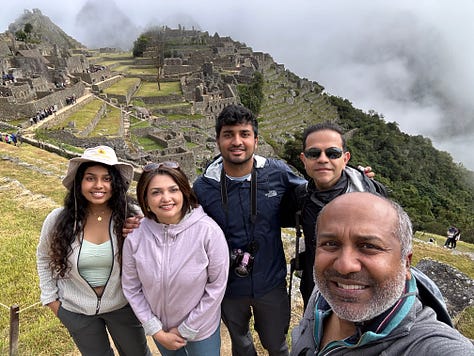
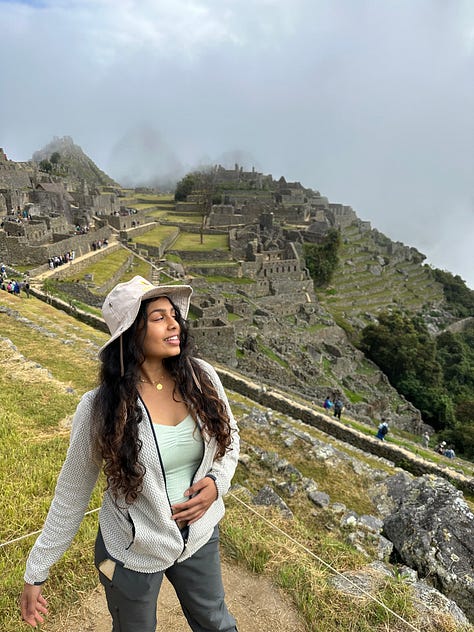
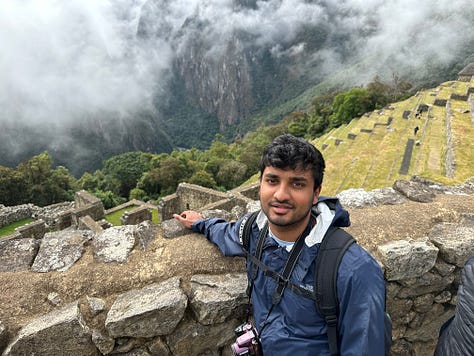
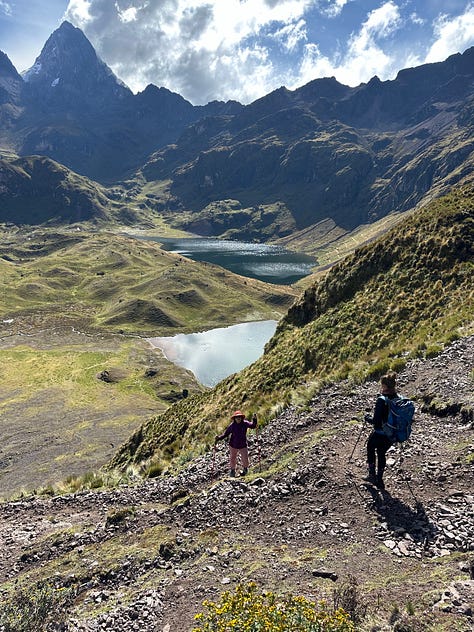
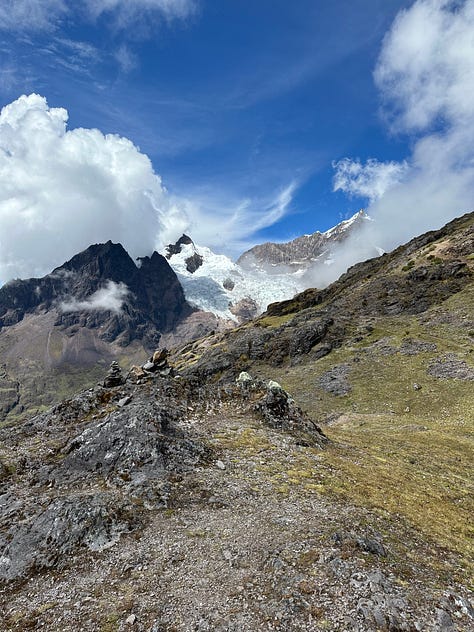
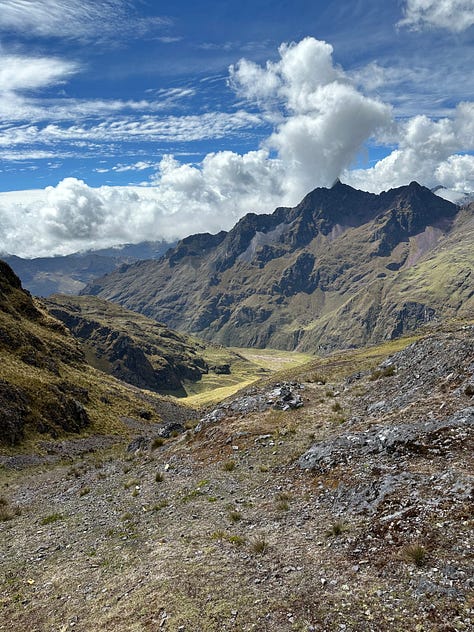
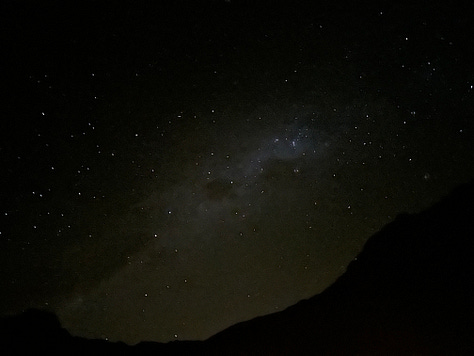
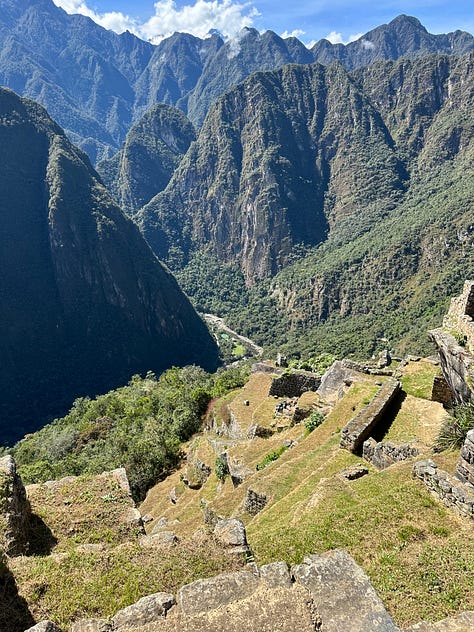
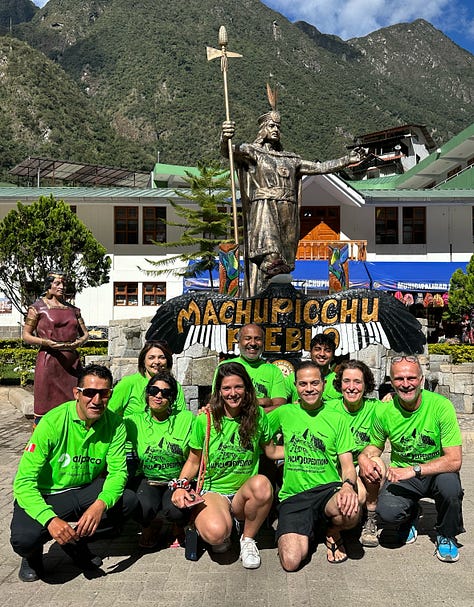
Meanwhile, some things I learned:
Acclimatizing is critical. We traveled with Dr. Tejash Shah, who among other things, is a Spanish-speaker trained as an ER physician. So he understood the value of us spending three days in Cusco, getting used to the altitude (and giving us the right dosage of acetazolamide, which lessens symptoms of altitude sickness). Also helpful was constantly drinking coca tea; cue the cocaine jokes. Yes, cocaine can, in theory, be chemically extracted from it, but in the form we had, the only stimulation we got was like drinking a strong cup of coffee.
There’s silence and then there’s silence out in nature. I have never been in silence as pure as when we were hiking or sleeping at night.
There are starry nights and then there are starry night in the Andes. The night photo above will give you a taste of why the ancients were in awe of the stars.
Download the offline Google Maps everywhere you go. We were often at least a day’s hike from cell service and the internet, so I wish I had downloaded the offline maps in advance. Learn how at the link — they are useful far from the Andes.
The best guides are at times your coach, your boss, your parent. We chose Alpaca Expeditions (100% Peruvian company owned by an indigenous former guide and porter) and were so impressed by the quality of the planning and the briefings we received, the professionalism of the two porters, two chefs, two guides (and four burros) who made it all possible for us. Francisco, our main guide, is a master motivator, getting the lazy and weak like me to do things that I would never have done. Did he stretch the truth about how close milestones were? Absolutely. But if he hadn’t, I might have given up at various points in the trek. A big shout out to him; his trainee Carmen Rose; our guide on Machu Picchu, Ivan; and all their colleagues. You’ll see Frank hanging back with me in one of the videos below.
Everyone should read or listen to “The Truths: A History of the United States” by Jill Lepore. I was recommended this days before our trip and I got the audiobook for the trek. Am so glad I did. An ambitious single-volume history, Lepore, New Yorker staff writer and Harvard professor, does a great job exposing the lies at the heart of the American story. “A nation born in contradiction… will fight, forever, over the meaning of its history,” she says. And that’s what we are doing today. The author’s voice kept me company when everyone else in my group had marched far ahead and also distracted me when I wasn’t sure I’d make it. And listening to her tale of the U.S. was especially appropriate as I was in a land that also had been a victim of European colonizers. Machu Picchu itself today in in such good condition archaeologically because the Incas, knowing the Spaniards were coming, cut off the bridges and abandoned the site, letting it be overrun by nature for four centuries.
I’ve been asked what I liked and disliked the most. In addition to the views, it was the food the chefs made for us along the way that I liked most. We were omnivores (including the wonderful German family who joined us in Cusco) + a vegetarian + a vegetarian who doesn’t eat milk products or mushrooms + a lactose-free vegan who doesn’t eat rice. But the 3-4 customized, hot meals they made for us every day were absolutely delicious.
As for what I didn’t like, apart from the low oxygen, the constant exhaustion and the various body aches, it was the cold in our tents at night and the early hours (constantly around 32F/0C). But during parts of the day, we’d have to be in shorts and T-shirts.
So, what’s next? Often, privileged travelers who are able to hike the Andes then make plans to hike Kilimanjaro and/or Everest Base Camp. But that’s not for me. I plan to take all my future vacations at sea level, with minimum exertion, thank you very much.
Here are excerpts from Roopa’s essay:
It must have been the middle of the third day of our trek, about 15,000 ft/4,572 m) above sea level (for context, Everest base camp is a little over 17,500 ft (5,300 m) above sea level), that I heard one of my fellow-trekkers maintain a low chant..."why, why, why...?" Given all my tortured muscles and lack of air, I couldn't quite laugh, but I did stop to consider the question as I wheezed and surveyed the beautiful Andean cliffs around me, and the sheer drop at the edge of the narrow ledge I was walking. Why, indeed?
[I was the “why” chanter, of course!]
And my kids were turning 21 (we celebrated their birthday in Peru). They are Manhattan born and raised, so marking their transition to adulthood in the wide open air of the Andes, unobscured by manmade skyscrapers under skies bright and star-filled felt idyllic. And the two of them loved the experience, adventurers that they are.
But there's a lot to be said about unplugging in a very definite way from all things modern. That's what was inevitable on the five-day trek — no internet, no media, no energy to debate politics or inflation.
<snip>
It's discombobulating how narrow some of the paths are — going up, you feel your lungs scream for more oxygen, going down, your thighs beg for a break — but most times, you're quite conscious of the pebbles skittering down and off the hillside. You try to focus on the next step. As in life, that's really all you have control over, now that you've launched yourself on this journey. Going back isn't an option, and no miraculous vehicle can come whisk you away. One step in front of the other — that's what you have control over. So you take the step, look up and around, and marvel at nature and the civilizations that came before you, and will probably come after as well. Recognize that at the end, you have this moment to live well and fully, and take a small swig of water, breath and take that next step.Of the eight of us on the trek, I was one of the less prepared and conditioned. Most of the others were younger or more experienced trekkers. So on day one, about 10 minutes in, at our first stop, I volunteered to drop out - "I can't hold all of you back," I said, frustrated by my breathlessness and appalled at the thought of being the "weakest link." Absolutely not, the group said - you're here, and you're going to walk.
<snip>
And the best part of the trip? Sure, it was about getting to Machu Picchu, and yes, it's glorious. The science of water management, astronomy and city planning that the Incas used, so pristinely preserved thanks to Atahualpo Inca obscuring the way from the marauding Spaniards.But the best part was those precious moments when the kids stepped up: my daughter guiding my husband as he straggled/struggled in the mid-day sun, my son carrying our bags as we scrabbled to maintain our footing on the pebbled ledges, all of us laughing with the group as we traded jokes and favorite moments of the day, sitting under the most fabulous skies we have ever seen. (Quite freaky to see the Big Dipper upside down from the southern hemisphere!)
Folks: Share your hiking or Peru stories with us. Or if you have questions, let me know. And be careful out there!
— Sree | Twitter | Instagram | LinkedIn | YouTube | Threads
Promotional message
Be smarter at cocktail parties with THIS WEEK, THOSE BOOKS
A quick weekly newsletter and five-minute podcast that connect the dots on the week's big news story and the world of books. A literary take on the news from London-based journalist and writer, news junkie and passionate book reader Rashmee Roshan Lall. Makes you smarter, faster. More than 10,000 readers in 110 countries agree. Sign up here.
DIGIMENTORS TECH TIP | The Gift of Almost-Silence Gets Cheaper by the Day
By Robert S. Anthony
Each week, veteran tech journalist Bob Anthony shares a tech tip you don’t want to miss. Follow him @newyorkbob on Twitter and check out his 1.1 million followers on Pinterest!
There was a time, not so long ago, when a noise-canceling Bluetooth wireless headset would have set you back a few hundred dollars—and made you the envy of your peers. Today the technology is much more common and readily available for much less, which comes as good news in the current “dads and grads” gifting season.
By using technology which generates negative noises that cancel out unwanted sounds, active noise-canceling (ANC) headphones can provide a cleaner, purer audio experience, allowing users to immerse themselves in their favorite music or in clear, crisp audio in phone calls or teleconferences.
While the appearance of the 1MORE SonoFlow Wireless Active Noise Cancelling Headphones doesn’t distinguish it from other over-the-ear headphones, the unit offers more features than one might expect for its price. The unit lists for $99.99 but was on sale recently for $63.99.
The half-pound headset doesn’t have the heft of more expensive units with larger, heavier bass-booming drivers, but when tested, its 40mm dynamic drivers provided more than adequate audio quality for music and phone calls.
A small switch toggles its three QuietMax ANC settings from ON to a useful “transparency mode” which allows you to hear ambient noises and people talking to you to OFF. The unit’s environmental-noise-cancellation (ENC) microphones filter out non-voice sounds so the person on the other end of a phone call can hear you clearly.
In addition to its Bluetooth wireless features, the unit, which comes with a hard case, can also be used as a wired headset with the included cable. According to 1MORE, the SonoFlow offers up to 70 hours of use per charge including a fast-charge feature which provides 5 hours of use after just a 5-minute charge.
Unlike headphones or earbuds, the small EKSAtelecom S30 Open-Ear Air Conduction Wireless Communications Headset doesn’t cover or block the ears but has an open-ear design and uses the company’s “air conduction” technology to transmit audio to the ears.
According to EKSAtelecom, each Bluetooth 5.3 headset precisely directs audio into the ear canal so the maximum amount of audio is heard clearly without much audio spilling outside the ear that others could hear. A privacy mode can be enabled to reduce headset volume further.
The lack of incoming noise cancelation is by design—the unit is meant to maintain the user’s connection with the outside world. By using multiple microphones, EKSAtelecom promises 99.9 percent environmental noise cancellation for listeners on the other end of phone calls with its VoicePure ENC technology, a level which would make the headset useful even in loud settings.
According to the company, the EKSAtelecom S30 provides up to 70 hours of working time thanks to its charging case, which can provide 3.5 additional charges of the headset from the case battery. The unit, which lists for $169.99 but is currently on sale for $149.99, also offers a five-minute charge-for-60-minutes-use fast-charge feature.
Unlike tuition, books and rent, the cost of incorporating active-noise-cancelling technology into headsets should continue to drop—a nice bit of good news for the cheapskates among us.
Did we miss anything? Make a mistake? Do you have an idea for anything we’re up to? Let’s collaborate! sree@sree.net and please connect w/ me: Twitter | Instagram | LinkedIn | YouTube / Threads



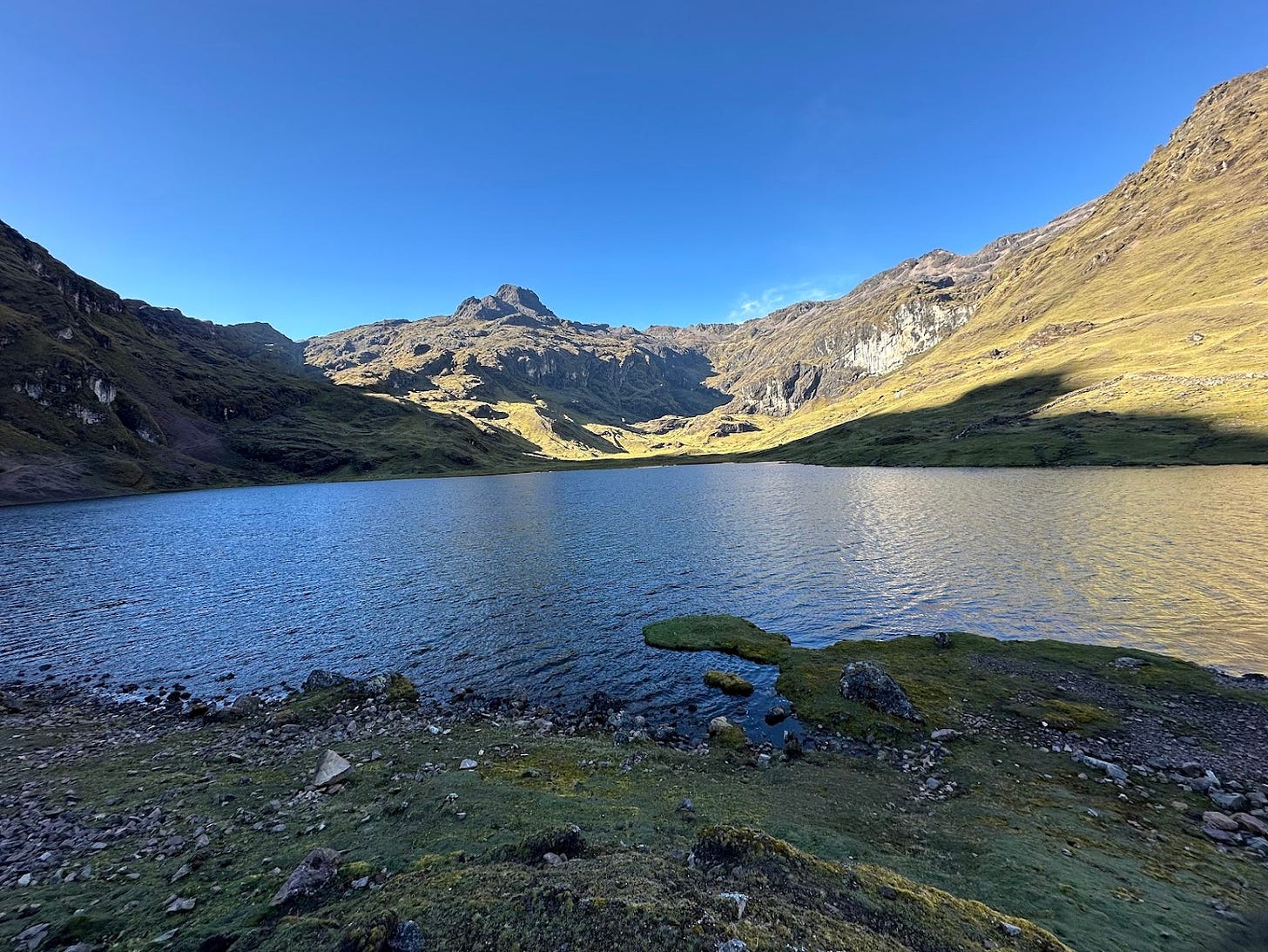
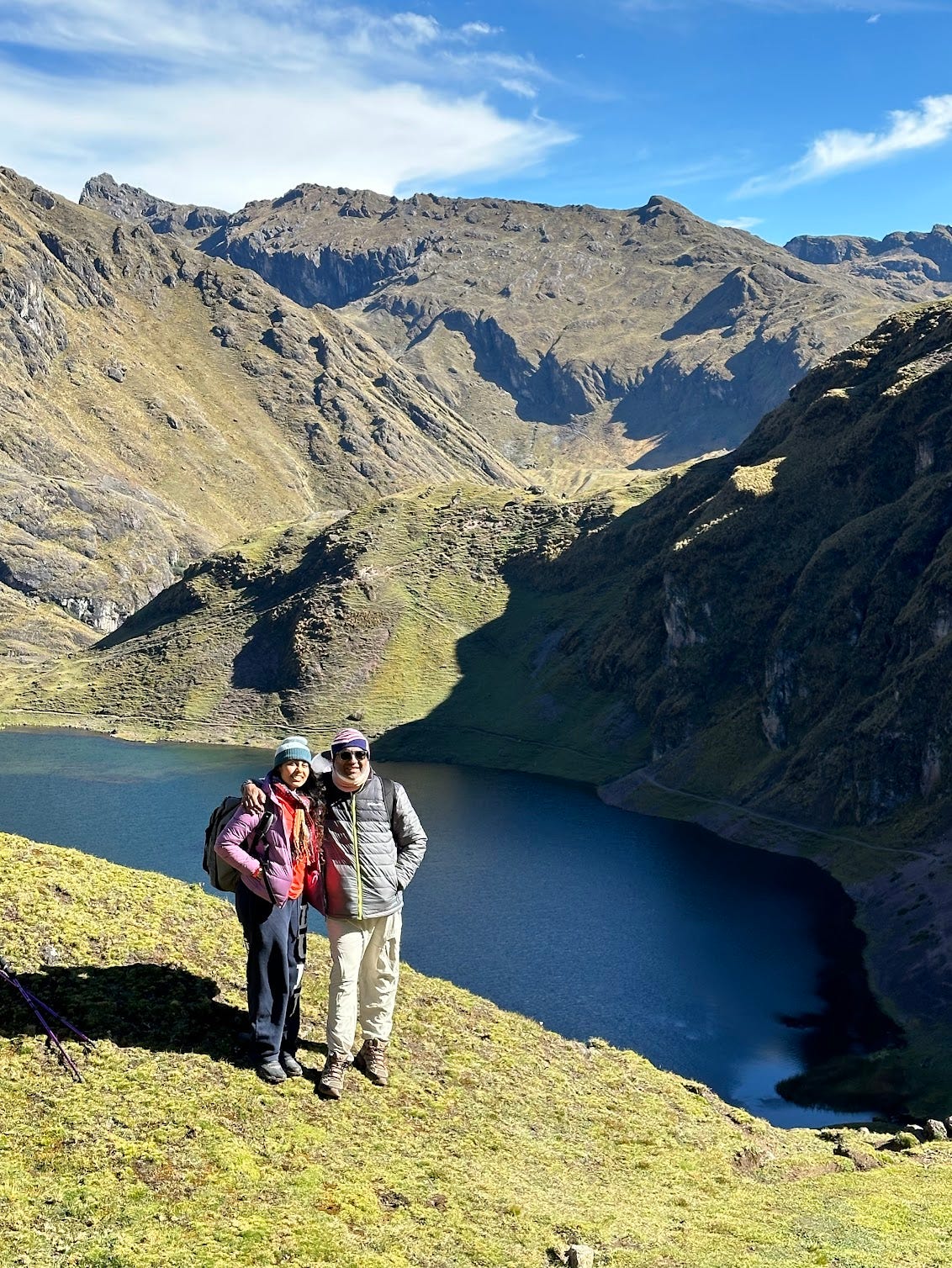

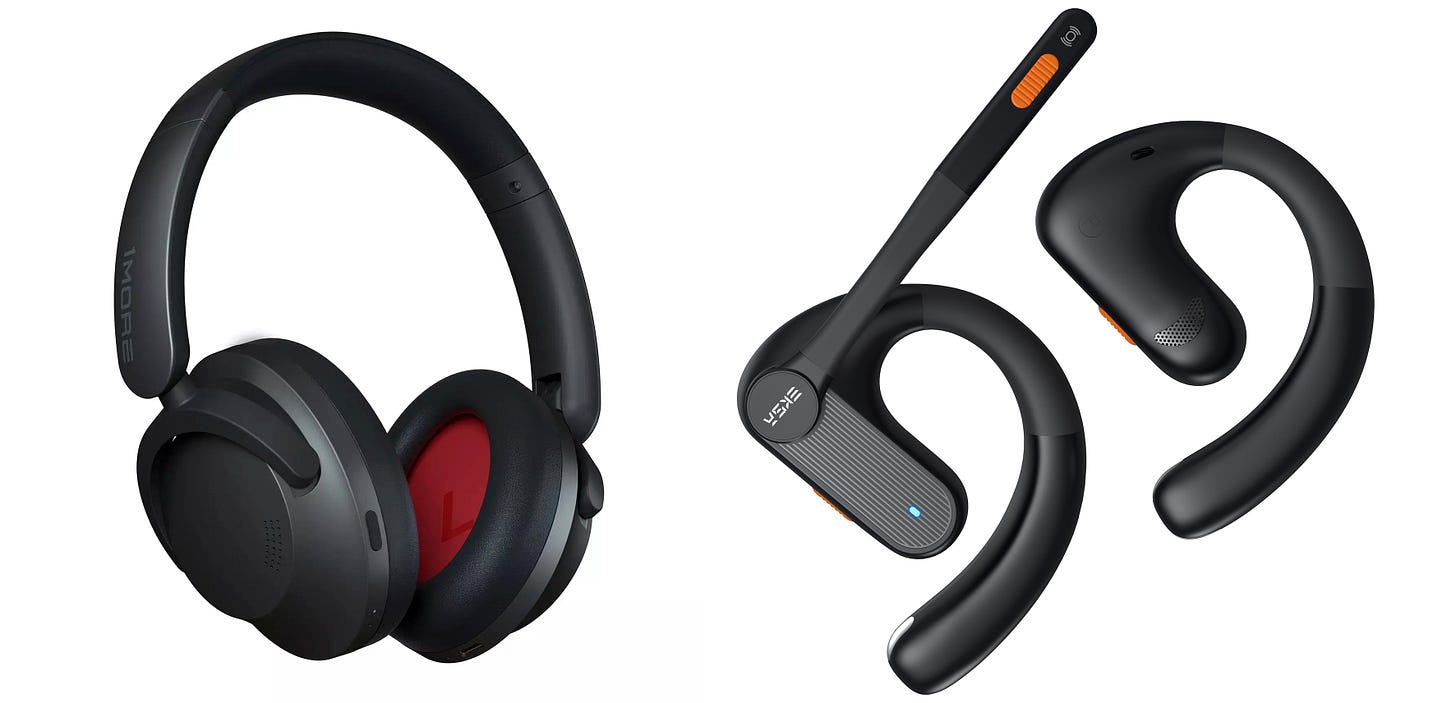
If the link to the offline Google Maps didn't work for you, this is the right link: https://blog.google/products/maps/google-maps-offline/
Totally amazing experience you all had. The dark sky you experienced is beyond precious. Most people in the world will never know that. We used to have a pretty close to dark sky at my house in the NY Berkshires. The light has been encroaching year by year, and the increase in light pollution makes me want to cry.
I mentioned to Roopa in a comment on her LI blog that the big dipper is upside down in the northern hemisphere in the winter. It never gets un-odd in my experience.